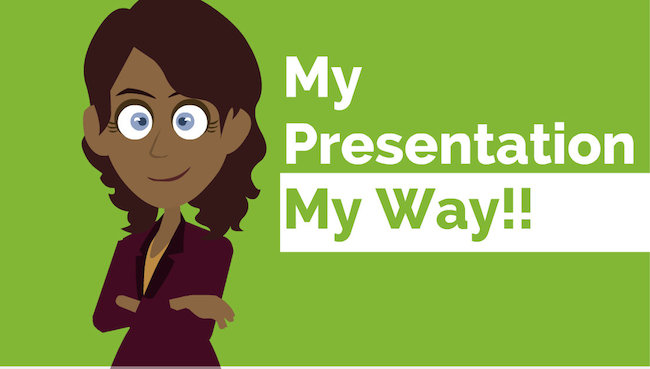The old rules of effective public speaking changed forever in June of 2006. That’s when TED posted their first 6 TED talks online featuring presenters like Al Gore, Tony Robbins, and Ken Robinson. The reason that was a pivotal moment in the history of public speaking was that the videos exposed the world to what was possible regarding effective speaking.
Overnight, the standard for good public speaking was raised. Now, every time you present, your colleagues compare you to the best-of-the-best in the world and not just to the people in your organization.
Most importantly, people now know that their boredom in a meeting is not because of the topic, it is because of the presenter. TED talks demonstrated that a good speaker could turn any topic (ex. Global Warming, school reform, and statistics) into an accessible, engaging, and informative conversation.
Because of TED talks, the rules of effective speaking have changed. Each of the old rules and what they were replaced with is listed below.
Old VS New Rules of Effective Public Speaking
- Old Rule #1 You have to be formal when presenting
- New Rule# You have to be authentic
One time I was talking to a colleague speaker off-stage, and he was the most approachable guy I have ever met. I was shocked later to see him speak in front of the room because he somehow transformed into a cold, calculated robot. I was thinking to myself “who is this guy!”
Later, he told me that this was his “formal presentation mode.” The funny thing is that I was doing the same thing, but I was unaware of it. Like most people, I used to think that you had to be formal on stage and casual off stage. The feedback I have received from my mentors and, even more importantly, my audience members has taught me that people place a high value on my authenticity.
What a relief! You know that it’s exhausting to pretend to be someone you are not, even if it’s only for an hour long speech. To be an effective presenter, just be yourself.
Warning:
That does not mean that you should stop working on yourself. It just means you should improve your whole-self on a continuous basis, and stop playing a different personality on-stage and off-stage. However, you can be formal and informal with the way you dress (that’s ok).
- Old Rule #2 Practice makes perfect
- New Rule #2 Good practice makes perfect; bad practice makes disaster
You have heard this before from old school trainers: “Son, practice makes perfect!”
I say don’t listen to that advice because most of the public speaking anxiety cases I see are a result of bad practice. It is because every time you practice while feeling anxious, you are also practicing fear. If anything, you become capable of anxiety instead of effective at public speaking.
A recent client of mine started having anxiety attacks after a 20-year sales career while presenting. After working with her briefly, I could tell that she had been toughing it out her entire life, and the anxiety kept building and building until it got to a tipping point and started affecting her career. In this case, the solution is easy; we have to recondition our bodies with good practice.
What is good practice?
A good practice is when you practice your presentations in a relaxed and anxiety-free state. You have to put yourself in a good state before you practice. This conditions your body to respond differently to public speaking. So the next time you speak, your body will trigger the positive state instead of anxiety state.
My favorite state to have in place of anxiety is a state of certainty. Some of my clients prefer their reconditioning to be towards a state of love and compassion. I am ok with that because anything is better than anxiety. However, the only way to replace your bodies response to speaking is by continuously practicing by getting in your desired state first.
- Old Rule# 3 Memorize your presentations
- New Rule#3 Learn your structure
Have you ever heard a memorized presentation before? How was it?
Let’s be honest; memorized speeches do not sound right. They sound more like “public reading” than public presenting. Even though that’s ok in some settings (presidential speeches, graduation ceremonies, board meeting minutes, etc.), it is not effective in most contexts.
Also, memorizing a presentation is the most difficult way to approach the speaking process. It takes energy and time to learn a whole presentation and what happens if you forget one word? What happens if you get interrupted with a curve ball question? This approach does not usually end well, and it creates unnecessary fear and anxiety.
Instead of memorizing a presentation word-for-word, learn to remember the structure of your presentation. A great mentor of mine (Roberto Monico) once told me that structure could set me free. I followed his advice, and I created a standard structure for all my keynotes, talks, and presentations that I now follow every time I create a speech. It helps me create great presentations fast and stay on track with all of my points while still leaving me flexible for anything unexpected that might happen.
I recommend that you create your structure, or learn a structure that works for you. You can learn our systematic and bulletproof structure in the Magnetic Speaking Blueprint Boot Camp if you are interested.
- Old Rule #4 Slides are king
- New Rule #4 Narrative is king
I come from a corporate background. I used to build presentations using the Frankenstine Presentation Technique.
I would dig up old decks and slides and stitch them together to make a new presentation. Then tell myself, “oh my God what have I created it? How do I present this to the world?”
Does that sound familiar?
At this point, you start working a narrative that will fit the Frankenstine Slides. Later you wonder why some people in your audience fell asleep and why some did not understand your presentation or vision.
As a modern professional and leader, the most important goal for your presentation is to move your audience from point A to point B. Your whole focus is to build a narrative that will take them inch by inch to point B. By focusing on the narrative and building it before putting your slides together, you will have the freedom to think without the constraints of your slides.
Once the narrative is built, then you can choose whether or not to create the slides. Sometimes, if you focus on narrative presentations, you will realize that you will not need as many slides and even if you need slides, and have to dig through old presentations to get them, your job is now easier because you know exactly what you are looking for.
I know that I am tough on you. It’s not easy to drop a habit you’ve had for a while. It took me a long time to drop my corporate Frankenstine Slide Techniques. Now I am glad that I did.
The trick is to start small. Drop the slides for part of the narrative of your presentations and see what happens. Most likely you will get a better reception from your audience, and that will encourage you to drop more and more.
Conclusion of The 4 Newest Rules Of Effective Public Speaking
The old rules of effective public speaking changed forever because of the videos released through TED talks. The reason that was a pivotal moment in the history of public speaking is that the videos exposed the world to what is possible regarding effective speaking. Here is a list of the old vs. new public speaking rules:
Old Rule #1 You have to be formal when presenting
New Rule# You have to be authentic
Old Rule #2 Practice makes perfect
New Rule #2 Good Practice Makes Perfect; Bad Practice Makes Disaster
Old Rule# 3 Memorize your presentations
New Rule#3 Learn your structure
Old Rule #4 Slides are king
New Rule #4 Narrative is king
If you like or dislike comment below – I read every comment and love your feedback.
Leaving a comment is good for you too, it will help you be more articulate and in building your confidence to sharing your opinions. If you don’t know how to do it, read this article on Linkedin.




